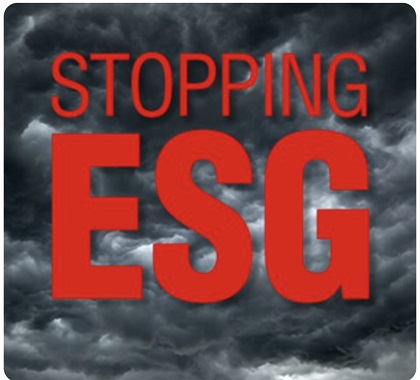A new Policy Analysis by Corey A. DeAngelis, an education policy analyst for the Cato Institute, shows an increase in the share of students attending private schools typically leads to “moderate” increases in student achievement in math, reading, and science.
In “The Public Benefit of Private Schooling: Test Scores Rise When There is More of It,” DeAngelis examines data from 52 different countries between 2000 and 2012. DeAngelis found a 1 percentage point increase in the private school share of student enrollment led to a 2.5 percentage point increase in math scores, a 1.5 point increase in reading scores, and a 1.3 point increase in science scores on the Programme for International Student Assessment (PISA) test. A product of the Organisation for Economic Co-operation and Development, PISA assesses the academic ability of 15-year-old students. Each participating nation must test at least 4,500 students from 150 different schools to be included in the study.
“According to these results,” DeAngelis writes, “a 1 percentage point increase in the share of students enrolled in private schools would result in around a 1.3 percent gain in lifetime earnings for the average student in a given nation, or about $15,000 per student in the United States. Moreover … the estimated effects resulting from a 1 percentage point increase in private schooling share would be equivalent to more than two months of learning gains.
“To put this in perspective,” DeAngelis continues, “consider that the United States ranked 40th in math and 24th in reading on the 2015 PISA exam. If the United States had experienced a 10 percentage point increase in private school enrollment at that time (an increase that would be out of the ordinary for the United States), I estimate that the nation would have achieved a 14-point increase in math and a 10-point increase in reading, resulting in the country being ranked around 34th in math and around 13th in reading. However, private school enrollment in the United States is currently going in the opposite direction, declining from almost 12 percent in 2000 to around 8 percent in 2012.”
DeAngelis concludes policymakers should take their cues from the results of this report and work to expand access to private schools through school choice programs, such as education savings accounts (ESAs), school vouchers, and tax-credit scholarships. In May 2016, EdChoice released a report in which it examines 100 empirical studies of school choice programs. Eighteen of these studies used random assignment to measure outcomes, referred to in academia as the “gold standard.” The overwhelming majority of the available empirical evidence made it clear school choice offers families improved access to high-quality schools that meet their widely diverse needs and desires, and it does so at a lower cost while simultaneously benefitting public school students and taxpayers, decreasing segregation, and improving civic values and practices.
“There is … good reason to believe that education grounded in rationally self-interested decisions can benefit all of society through a better-educated citizenry,” DeAngelis states. “Because the freedom to choose a child’s school reduces the monopoly power exercised by public schooling, we should expect expanded school choice to result in better educational quality and lower school cost. Since families care about the cognitive outcomes of their children, they will select schools based on academic quality. Moreover, if parents have the freedom to select their children’s schools, they will have a stronger interest in becoming more informed about the quality of various educational options.”
The goal of public education in the United States today and in the years to come should be to allow all parents to choose which schools their children attend, require every school to compete for every student who walks through its doors, and make sure every child has the opportunity to attend a quality school.
The following documents provide more information about school choice programs.
The Public Benefit of Private Schooling: Test Scores Rise When There Is More of It
https://object.cato.org/sites/cato.org/files/pubs/pdf/pa830.pdf
This Policy Analysis from the Cato Institute examined the effect that increased access to private schooling has on international student test scores in 52 countries around the world, finding that a 1 percentage point increase in the private share of total primary schooling enrollment would lead to moderate increases in student math, reading, and science achievement within nations.
Education Savings Accounts: The Future of School Choice Has Arrived
https://heartland.org/publications-resources/publications/education-savings-accounts-the-future-of-school-choice-has-arrived
In this Heartland Policy Brief, Policy Analyst Tim Benson discusses how universal ESA programs offer the most comprehensive range of educational choices to parents; describes the six ESA programs currently in operation; and reviews possible state-level constitutional challenges to ESA programs.
A Win-Win Solution: The Empirical Evidence on School Choice (Fourth Edition)
http://www.edchoice.org/wp-content/uploads/2016/05/A-Win-Win-Solution-The-Empirical-Evidence-on-School-Choice.pdf
This paper by EdChoice details how a vast body of research shows educational choice programs improve academic outcomes for students and schools, saves taxpayers money, reduces segregation in schools, and improves students’ civic values. This edition brings together a total of 100 empirical studies examining these essential questions in one comprehensive report.
2017 Schooling in America: Public Opinion on K–12 Education, Parent Experiences, School Choice, and the Role of the Federal Government
https://www.edchoice.org/wp-content/uploads/2017/11/2017-Schooling-In-America-by-Paul-DiPerna-Michael-Shaw-and-Andrew-D-Catt.pdf
This annual EdChoice survey, conducted in partnership with Braun Research, Inc., measures public opinion and awareness on a range of K–12 education topics, including parents’ schooling preferences, educational choice policies, and the federal government’s role in education. The survey also records response levels, differences, and intensities for citizens located across the country and in a variety of demographic groups.
The Effects of Statewide Private School Choice on College Enrollment and Graduation: Evidence from the Florida Tax Credit Scholarship Program
https://heartland.org/publications-resources/publications/the-effects-of-statewide-private-school-choice-on-college-enrollment-and-graduation-evidence-from-the-florida-tax-credit-scholarship-program
This study from Urban Institute scholars Matthew Chingos and Daniel Kuehn shows Florida’s Tax Credit Scholarship Program boosted college enrollment for participating students by 15 percent, with students enrolled in the program for four or more years seeing a 46 percent hike.
Taking Credit for Education: How to Fund Education Savings Accounts through Tax Credits
https://heartland.org/publications-resources/publications/taking-credit-for-education-how-to-fund-education-savings-accounts-through-tax-credits?source=policybot
This Cato Institute paper shows how legislators can design an education savings account (ESA) that is privately funded through tax-credit-eligible contributions from taxpayers, similar to tax-credit scholarship programs that already exist in states across the country. Tax-credit-funded ESAs would empower families with more educational options while enhancing accountability and refraining from coercing anyone to financially support ideas they oppose. Because they are funded through voluntary contributions, rather than public funds, tax-credit scholarships have been found by the U.S. Supreme Court and by every state supreme court that has considered the issue to be within the bounds of the U.S. Constitution and most state constitutions. In states that have Blaine amendments, which greatly restrict the ability of lawmakers to create some school choice programs, tax-credit ESAs could be a lifeline to families in need.
The School Voucher Audit: Do Publicly Funded Private School Choice Programs Save Money?
http://www.edchoice.org/wp-content/uploads/2015/07/The-School-Voucher-Audit-Do-Publicly-Funded-Private-School-Choice-Programs-Save-Money.pdf
This report by Jeff Spalding of EdChoice provides a program-for-program breakdown of school voucher costs and savings. On the whole, Spalding says these programs have provided a cumulative savings of $1.3 billion since 2007, or roughly $3,400 per pupil.
Competition: For the Children
https://heartland.org/publications-resources/publications/competition-for-the-children
This study from the Texas Public Policy Foundation claims universal school choice results in higher test scores for students remaining in traditional public schools and improved high school graduation rates.
Nothing in this Research & Commentary is intended to influence the passage of legislation, and it does not necessarily represent the views of The Heartland Institute. For further information on this subject, visit School Reform News, The Heartland Institute’s website, and PolicyBot, Heartland’s free online research database.
The Heartland Institute can send an expert to your state to testify or brief your caucus; host an event in your state; or send you further information on a topic. Please don’t hesitate to contact us if we can be of assistance! If you have any questions or comments, contact John Nothdurft, Heartland’s director of government relations, at [email protected] or 312/377-4000.




